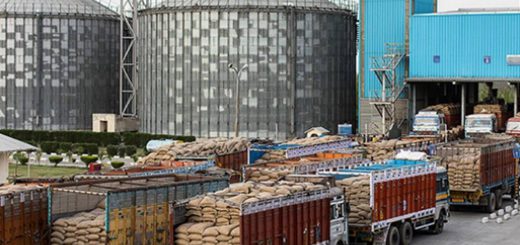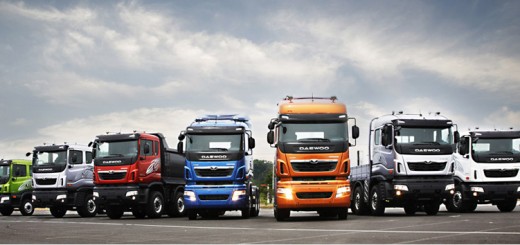How On-Demand Companies Affect The Logistics Sector?
Businesses that operate on-demand use platforms that can be accessed via websites and mobile applications. With just a few clicks, customers can choose products, place orders, and make payments through digital platforms. They can also track their orders in real-time. More of what? In the blog, let’s investigate:
Year after year, businesses across all industries strive to be more customer-oriented in how they position their services and/or products to suit the market’s needs. On-demand businesses have become popular largely due to the growth in the customer-centric market. This specific business model offers prompt and practical delivery of goods to customers’ doorsteps. These models revolve around quick access and speed to address changing customer needs effectively.
The service industries are the same. Imagine Airbnb! Customers can easily reserve a place to stay for a predetermined number of days or weeks, staying in touch with the host until they arrive at the location to take over the space.
Uber lets you Get Anywhere and Anything
Uber is an app that provides services on demand to its customers such as establishing food delivery services, cabs, and any goods delivery services. They have changed the entire transportation and goods courier business with simple reservations, fixed tariffs before the journey, and tracking the fulfillment of the order.
The global spread of on-demand services has made it easier for businesses to join the trend and automate their services.
Growth of E-commerce and its Effects on Logistics
E-commerce has been rapidly expanding for a while now. It has drawn customers with competitive pricing, simple returns, quick, and free shipping. During the COVID-19 pandemic, the convenience provided by on-demand businesses essentially turned into a blessing.
As the world came to a halt, consumers began driving an ever-growing demand for commerce through mobile devices—and due to that, they needed far more sophisticated avenues for purchasing basics with their phones. The growth of e-commerce has altered consumer patterns and the logistics sector has been affected the most.
As companies reposition their fleets for JIT delivery, especially in the last mile, last-mile delivery is gaining more importance.
- To keep pace with the developments in eCommerce, logistics services have shifted focus to expansiveness.
- To speed up delivery and address scalability issues, businesses are choosing centralized distribution centers.
- Despite the decentralized lockdown in many nations, logistic service providers are also redesigning their freight pricing models to fulfill free shipping and “same-day delivery” for premium orders.
However, will the delivery business be able to match the expansion in e-commerce activities?
The pandemic has told us that there is more that we can do; that we can adapt to the situation better than how we initially imagined ourselves. As is the case with the businesses.
To meet the growing demand for eCommerce deliveries, many delivery companies are updating their strategies, costs, and contracts. To increase profitability, they are automating their warehouse processes and utilizing robotics.
Also Read:- 5 Fundamental Pillar of Freight Transportation
Challenges with traditional logistics and businesses that operate on demand
The on-demand business model is being challenged by a variety of traditional logistics and supply chain models, including:
1. Late Delivery
For delivery services, traditional logistics entails multiple agencies. It may cause delivery delays because drivers are unable to track the destination or coordinate delivery timing with the customer. There is also the possibility that the package will be misplaced.
2. More Expensive
Handling and coordinating with third-party delivery companies comes at a much higher cost than simple automation and optimization tools.
3. Changing Customer Expectations
A traditional logistics business model cannot meet the ever-increasing customer demand for faster delivery at the lowest possible cost. When on-demand businesses are hesitant to automate, it only adds to the problems.
4. Time-consuming Procedures
A traditional courier company’s logistics are managed by several agencies. The business process entails complex coordination and data sharing, which is tedious and time-consuming. Human intervention can lead to errors.
5. Excessive Paper-Work
In the traditional logistics model, goods dispatch and delivery receipt are recorded using pen and paper. Manual processes are more prone to errors, and keeping too much paperwork is time-consuming. Why do it by hand when documentation can be done online?
6. Inadequate Customer Service
Many courier services lack effective methods for customer service and feedback collection. When packages are difficult to monitor or arrive late, it irritates customers. Poor customer service can drive away clients, which reduces revenue. This is a problem that on-demand businesses need to recognize if they hope to turn a profit in the future.
The On-Demand World’s Prospects for Logistics
Traditional shipping firms must adapt as quick-service competitors transform the way shipping operates. This entails employing modern technology, cutting costs, and satisfying clients. Shipping firms may operate more efficiently, transport goods more quickly, and satisfy consumers by implementing intelligent computer systems.
Moreover, cooperation benefits both established and emerging shipping enterprises. They may create more functional systems that meet people’s requirements by pooling their resources and using one another’s professional skills.
In Conclusion
The expansion of on-demand companies has brought up both opportunities and new difficulties for the logistics industry. Logistics suppliers need to adapt to the ever-changing requirements of their clients. They must make greater use of technology, update their procedures, and provide superior customer service. The lessons we’ve gained during this period of transition will influence logistics going forward. It will result in a more customer-focused sector that works more and better reacts to requests. In the on-demand economy, businesses that are adaptable and creative will succeed.




Recent Comments